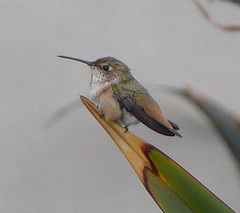 It’s possible that my favorite single panel at ASPAC this year was the first one I attended on Friday: three papers linking art and reality. In all three cases, it’s clear that an understanding of the reality behind the art creates a deeper understanding of social and cultural process. It’s easy to assume that literature and visual arts are clues to historical eras, but no evidence stands alone: putting the visual and textual evidence in the context of archaeological, ecological and other data is critical to making good use of it.
It’s possible that my favorite single panel at ASPAC this year was the first one I attended on Friday: three papers linking art and reality. In all three cases, it’s clear that an understanding of the reality behind the art creates a deeper understanding of social and cultural process. It’s easy to assume that literature and visual arts are clues to historical eras, but no evidence stands alone: putting the visual and textual evidence in the context of archaeological, ecological and other data is critical to making good use of it.
Ian Tullis’ paper described a kind of ecological niche approach to literary tropes: he was discussing the lesser cuckoo (hototogisu), a bird whose call is mostly associated with memory and summer in the fifth month. Tullis described the actual ecological niche of the cuckoo — whose habit of brood parasitism (placing its eggs in another bird’s nest; in Japan it’s usually the warbler [uguisu]) is the origin of the term “cuckold” — to explain the origins of its appearance in Japanese poetry. In contrast to the conventional image of Japanese, especially Japanese poets, as attentive to nature, Tullis pointed out that there was only one substantive reference in the Manyoshu to the cuckoo’s parasitic ways. The niche in which the cuckoo appears narrows over time, and this is true of almost all the birds, flowers and other phenomena of Japanese poetry: each term occupies narrower niches as the poetic tradition ossifies; still, the cuckoo’s association with memory meant that it was sometimes a positive and sometimes a negative association, more flexible than many other birds.1
Joseph Sorensen, who delivered the second paper, had the dubious honor of taking my 20th century Japan class at UC Berkeley in 1993 and is now a premodern literary scholar.2 His paper was on a fascinating literary dead-end: an attempt in 1295 by a group of Ise shrine priest-poets to produce a cycle of poetry identifying and celebrating new “famous places” [meisho] which could be added to the poetic landscape. As Sorensen pointed out, the idea of “new” famous places is an oxymoron, since meisho were, by definition, time-honored. But they tried, producing 160 poems on ten sites, including bridges, toll barriers, villages noted as travel stops — Sorensen noted the “incipient tourism” of the project, and that’s a theme that clearly has legs in Japanese literature — but the manuscript was never widely circulated and there’s no evidence that these shin meisho were ever used by other poets.
The last paper was Michelle Damian‘s discussion of the boats in woodblock prints. She’s done some fascinating work combining archaeology on existing boats, anthropological investigations of traditional practice and, of course, the use of visual texts as historical sources. She discussed the difficulty of using art — which is often stylized and where artists sometimes emphasize things that highlight their skills — as a source, and some of the common errors and adjustments artists make. Often they’re accurate, and when they’re not it’s usually an artist-specific stylistic error. She’s found some fascinating details in the prints which reflect actual shipbuilding and use: my favorite is the use of retired boats for a pontoon bridge; perhaps the most intriguing is the lack of docks and piers in most pictures, especially at river crossings. The link above is to her project journal, which is as close as you can get to liveblogging a thesis project that I’ve seen, and has some great illustrations from her collection.
It was a great start to the conference.